ARTICLE AD BOX

Para-skier Menna Fitzpatrick became Britain's most successful Winter Paralympian, along with guide Jen Kehoe, when they won gold, two silvers and a bronze at the 2018 Games in Pyeongchang. She is aiming for the 2022 Games in Beijing, which start on 4 March, where she will bid to add to her medal tally. This is her first BBC Sport column.
As a visually impaired skier, the relationship I have with my guide is key - especially when we are going downhill together at speeds of up to 70mph.
I have no vision in my left eye and very limited sight in my right eye so I need my guide to help get me down the course as safely and as fast as possible.
My previous guide Jen Kehoe, who I had worked with since 2015 and won Paralympic gold with, was scheduled to retire after the 2022 Winter Games. But because of Covid and a couple of other factors, including Jen returning to her role with the Army, our partnership came to an end last summer.
Adjusting to the change was difficult for both us, but we remain really good friends. Our shared experiences made us so close that I don't think that friendship could end.
When it all happened, I didn't have a guide, but GB Snowsport had a plan and now I am working with Katie Guest.
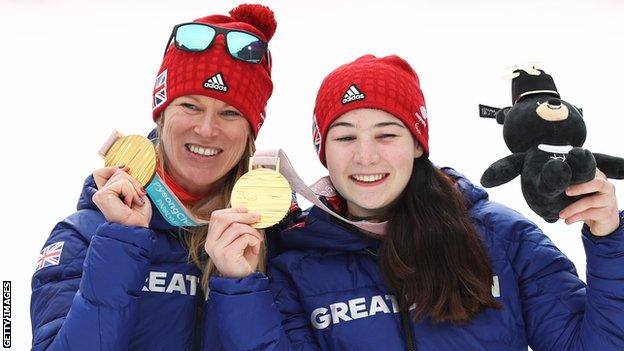 Kehoe and Fitzpatrick became Britain's most successful Winter Paralympians in Pyeongchang
Kehoe and Fitzpatrick became Britain's most successful Winter Paralympians in PyeongchangKatie is an accomplished skier - her older sister is Olympic skier Charlie Guest - and in the past has been a reserve guide for my team-mate Millie Knight, but that is only one of the elements you need as a guide.
It is all the softer skills around it - such as making sure everything is as easy as possible for me, particularly around things like changes in light and conditions when we are on the slopes, and thinking about what it will be like for me with my visual impairment. That doesn't come naturally to everyone and is something that you can't teach.
For a guide, first of all, you have to look at their ability to do the job - whether they've got the right skills and whether they will be fast enough. Then you've got to look at how their personality would fit in with me as a visually impaired athlete and whether we will get on and make a good partnership, plus whether we have the teamwork skills, and build it up from there.
Trust is another key part, but that trust works both ways. If you don't have the trust in the guide, then you won't have the skill and the speed. They also have to trust that I am going to follow their instructions.
Before choosing Katie, I did try a couple of other guides but for some reason it just didn't click or their personality didn't quite match up with mine, so that makes it a bit more difficult.
I actually prefer working with a female guide and GB Snowsport knew about Katie. We started training with each other in July and worked together all summer - first of all on the indoor slopes, to build up our confidence before going outside.
I was a bit nervous when we took to the slopes for the first time. As well as trusting your guide, you are trying to get used to how they ski, what their skiing style and shape is and how easy they will be to follow.
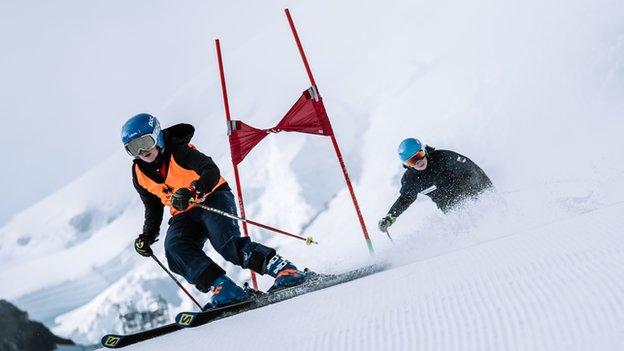 Guest and Fitzpatrick are having to learn a lot in a short period of time
Guest and Fitzpatrick are having to learn a lot in a short period of timeEveryone has their own unique style. It means I need to concentrate more on where Katie is turning, and what she is doing to stay on her line, because that is the safest place to be.
I can see the bright orange jacket that Katie wears and we try to use block colours. So Katie wears salopettes, so I can see the difference between her upper body and her lower body and that helps when she is initiating the turns.
But things are going really well and in our first races last month, we won by 0.07 seconds, which definitely gives us confidence for the rest of the season, with a World Championship in January and then a Paralympic Games in March.
I didn't know what to expect from those first races because I missed all of last season after breaking my tibia in March 2020. It had been a while since I had raced and I was a bit nervous in the start gate.
There are only a couple of years in age between us, which is nice, and we are enjoying spending our free time together, which helps the partnership. We've spent time sledging on the mountains, getting takeouts from restaurants and eating it together back at the hotel and also listening to music together - a bit of country/chilled Scottish music - that's Katie's influence!
As well as working with Katie, for some of my speed races (downhill and Super-G), I am being guided by Gary Smith, who worked with Kelly Gallagher in Pyeongchang.
I have worked with Gary previously in speed races, where I haven't with Katie - and with time tight between now and Beijing, the plan is for me to use the guide I feel more confident with in each race.
My training has been split between Gary and Katie - so if anything happens to one, then I will still have the other to race with.
Menna Fitzpatrick was speaking to BBC Sport's Elizabeth Hudson

 2 years ago
40
2 years ago
40
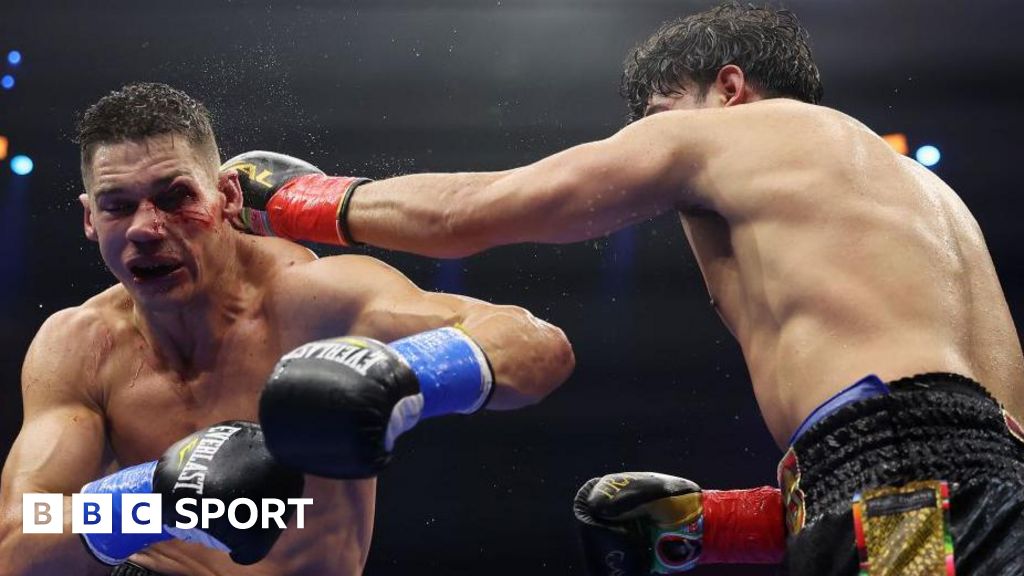
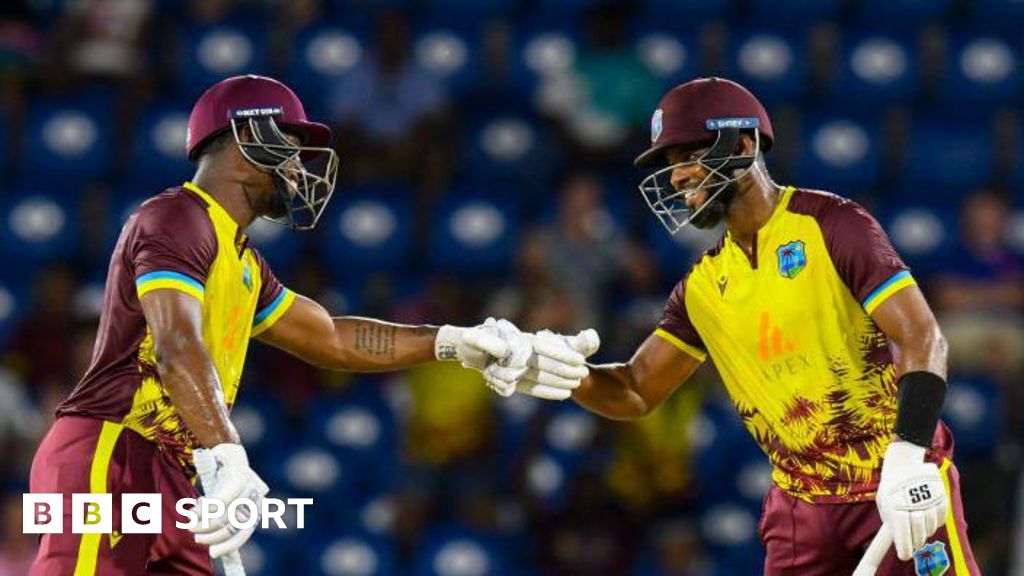
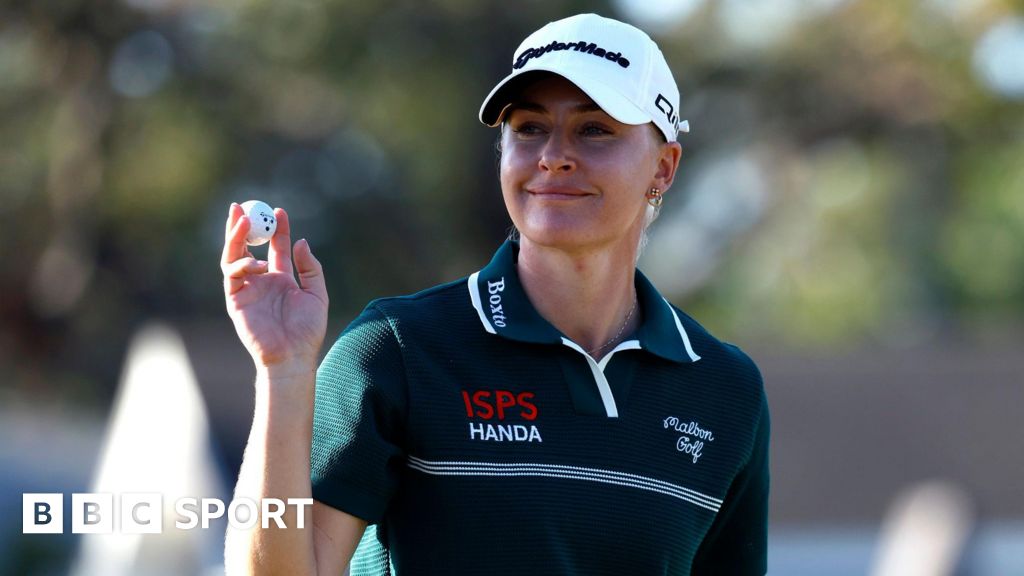





 English (US)
English (US)